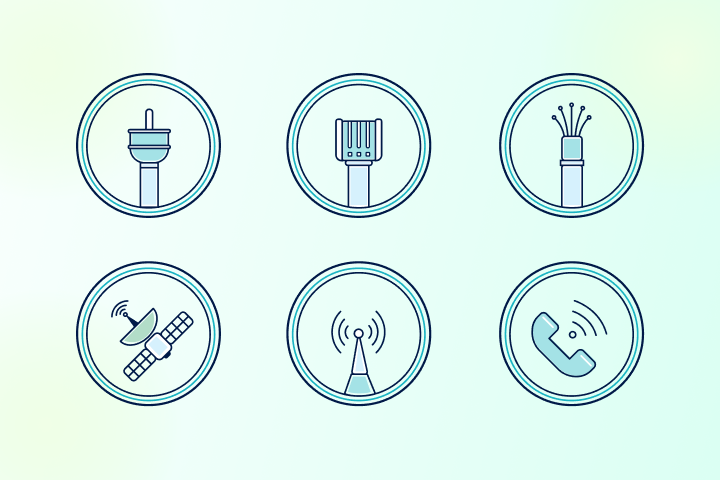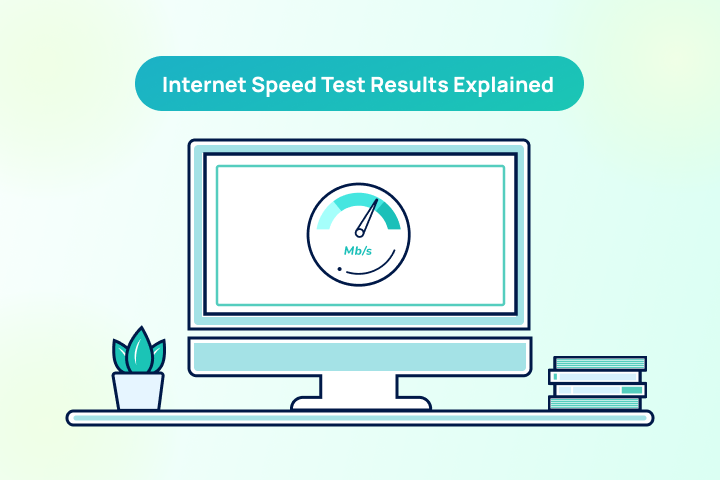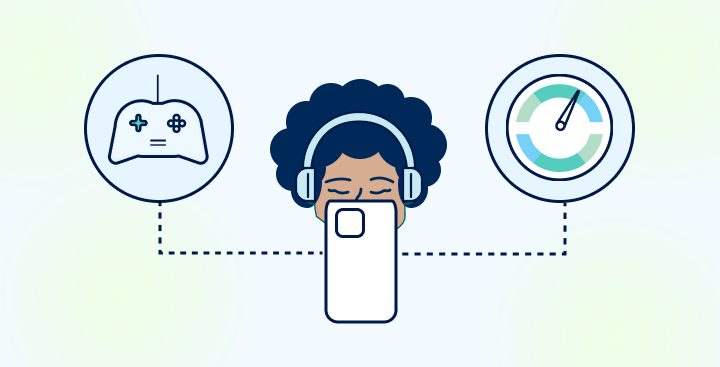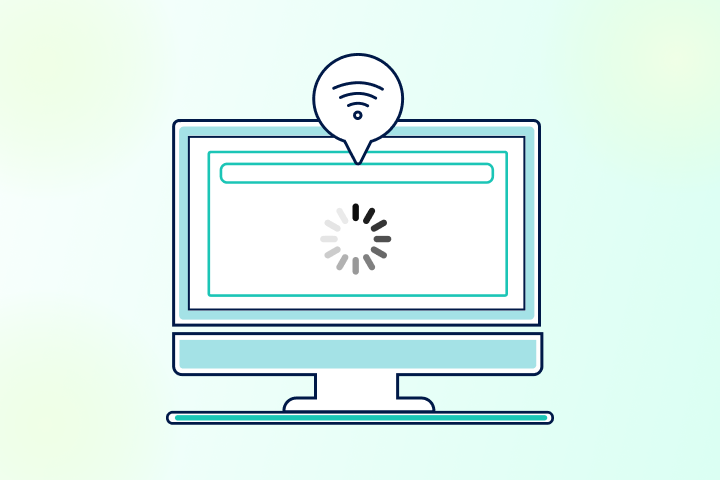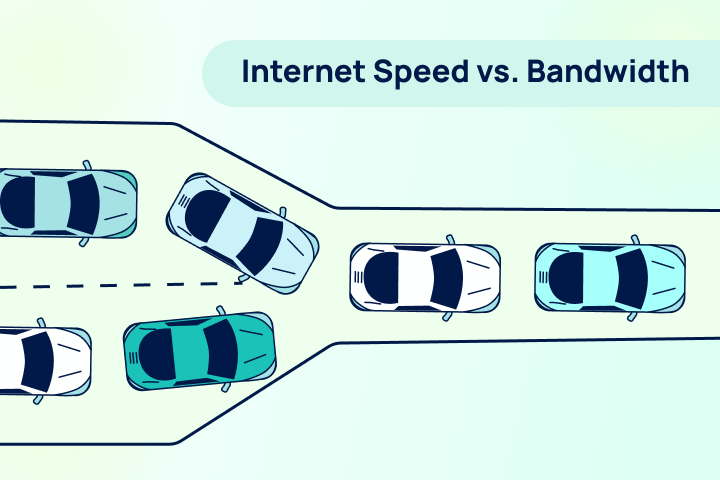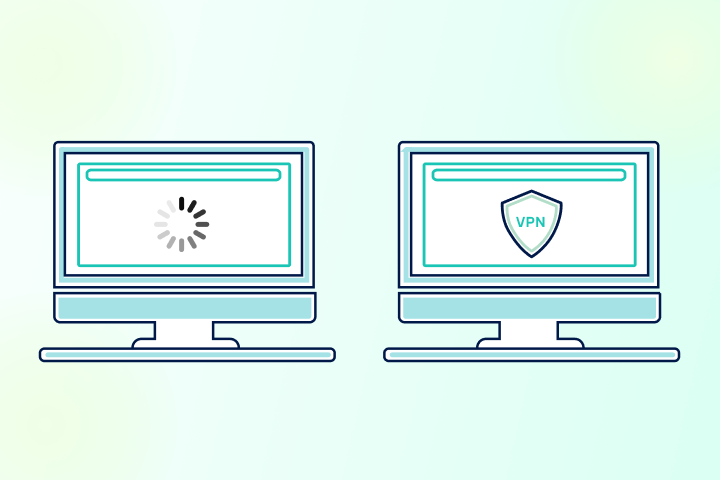When researching different internet providers, you’ll come across various types of internet connections. In this guide, we cover the pros and cons of common home internet types offered by providers, including cable, DSL, fiber, and satellite. We also explore what speed and reliability you can expect from each type of internet plan.
Internet Connections at a Glance
There are six home internet connections available today: fiber, cable, DSL, satellite, fixed wireless, and 5G internet. So, how do you know which one to choose?
The main factor in this decision is unfortunately availability. Depending on where you live, there are most likely 2-3 different types of internet out there, but hardly ever all six.
Here is a table outlining what each internet connection type typically offers:
| Internet Type | Download Speed Range* | Starting Price Range* | % of US Pop. with Access** |
| Fiber | 100 – 10,000 Mbps | $35.00 – $299.95/mo. | 40% |
| Cable | 25 – 1,000 Mbps | $19.99 – $120.00/mo. | 88% |
| DSL | 10 – 150 Mbps | $19.99 – $69.99/mo. | 89% |
| Satellite | 12 – 150 Mbps | $49.99 – $99.00/mo. | 99% |
| Fixed Wireless | 5 – 50 Mbps | $29.99 – $99.00/mo. | 43% |
| 5G | 50 – 10,000 Mbps | $50.00 – $70.00/mo. | 75% |
*All speeds and prices are ranges based on current market plans, which vary by location and are subject to change.
**Percentages are based on the FCC internet availability data as of 8/23/23.
The Different Types of Internet
Fiber is the best internet service overall due to its speed potential and reliability. It offers equal download and upload speeds of up to 5 Gbps (although 1,000 Mbps is much more common). This makes it perfect for households with multiple users, streaming, online gaming, and working from home.
Find how much Internet Speed do you need
Your household may want faster internet speeds.
<50 Mbps
Great for individuals to browse the internet, check email, and other basic browsing.
50-100 Mbps
Great for streaming Netflix, videos, and online meetings.
100-200 Mbps
Great for streaming high quality videos, fast downloads, video games, and multiple devices.
200+ Mbps
Great for doing almost anything at ultra fast speeds.
Fiber is a relatively new technology and is, therefore, the least available among the types of internet. However, internet service providers (ISP) are making massive investments in their fiber networks, so availability and capability will increase over the next several years. For these reasons, fiber can be one of the more expensive options, too.
Fiber Internet
Fiber internet uses light to transfer data along cables made of glass, and fiber-optic filaments. Because fiber uses light impulses rather than electrical currents, it can transmit data at the speed of light, making it one of the fastest connection types with 5 Gbps speeds available in some areas. While it offers some of the fastest speeds and supports multiple users, fiber is not as widely available as DSL and cable internet and can cost significantly more.
Pros
Fast symmetrical speeds
Most reliable connection
supports heavy use in multi-user homes
Cons
One of the more expensive options
Limited, but growing, availability in the US
Cable Internet
With far more availability than fiber, cable internet uses the same coaxial cables used for cable TV subscriptions. Cable internet is faster than DSL, reaching speeds up to 3 Gbps, and much more reliable. Due to its speed and availability, it is the leading choice today, with over 60% of U.S. households using the connection.
Pros
More availability than fiber internet
Supports online gaming and streaming video
Fast download speeds
Cons
Slower speeds during peak hours
Limited availability in rural areas
Moderate to high prices
DSL Internet
Digital subscriber line, better known as DSL internet, is one of the most available connection types in the United States because it uses the vast infrastructure of telephone lines to transmit data. However, its speeds are significantly slower than fiber and cable, with a max speed of 150 Mbps. DSL is also prone to service disruptions, latency issues, and buffering. It’s best for smaller households, users with minimal to moderate speed requirements, and lower overall cost.
Pros
Less expensive than fiber and cable internet
More availability, even in rural areas
Faster than dial-up
Cons
Slow to average speeds
Doesn’t support gaming and streaming well
High latency and buffering issues
Satellite Internet
As the name implies, satellite internet uses satellites orbiting Earth to transfer data between your home and the provider’s network. This connection type has the unique advantage of being available virtually anywhere and reaches speeds up to 200 Mbps. There are only a few satellite internet providers available today, and plans tend to be pricier per MB than other types. Although it isn’t the fastest or most affordable, satellite internet is ideal for folks looking for internet options in rural areas, where choices are usually limited.
Pros
Available almost anywhere
Can overcome physical barriers
Faster than dial-up an on-par with DSL speeds
Cons
Tends to be more expensive per Mbps
Data caps usually apply
Unreliable in severe weather conditions
Fixed Wireless Internet
Using cell towers, fixed wireless internet transmits data over radio waves, versus ground-based cables. Like satellite, fixed wireless is most common in rural areas where hard-wired cable connections are less common, but it does have line-of-sight requirements to establish and maintain reliable speeds and connectivity. Fixed wireless speeds vary greatly based on location, but can deliver speeds up to 1 Gbps in ideal conditions.
Pros
Delivers internet to underserved areas
Easy installation
Local customer service
Cons
Requires a clear line of sight to the tower
Less predictable speeds
Can be expensive
5G Internet
Fifth-generation technology, or 5G internet, is the new evolution in wireless networks to replace older technologies with far better performance. 5G data is transmitted over millimeter wave (mmWave) bands that are capable of speeds up to 10 Gbps. With faster speeds, it is also able to offer lower latency and increased connectivity than even fiber internet. While 5G currently offers about 75% coverage, it is mostly being used by cell phones. Home-based 5G internet availability is still minimal.
Pros
Some of the fastest speeds among all connections
Increased connectivity for more devices
Low latency
Cons
Cost and labor obstacles to overbuilding
Difficulty penetrating barriers
Very limited availability for home internet
Test Your Internet Connection
We recommend testing your internet connection regularly to see how it performs over time. Your internet speed test results can help you assess your internet needs, find the best times to get online and keep your ISP in check.
If you find that your current internet plan isn’t supporting your online activities as you expect, it may be time to upgrade your internet plan or speak with customer support to find a solution.
Choosing the Right Internet Connection
Picking the right internet connection really comes down to your needs and what is available in your area. Each has strengths and weaknesses when it comes to speed, cost, and availability. For those in rural areas, you may only have access to satellite internet. In those cases, you can rest easy knowing you have access to a reliable broadband internet service.
